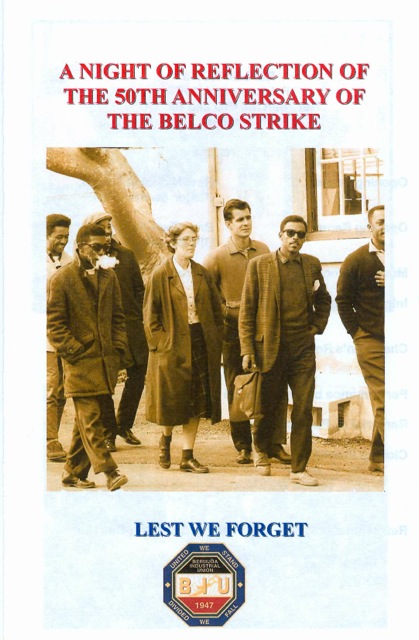

The panel discussion was to be part of “A Night of Reflection on the 50th Anniversary of the BELCO Strike”. It was to be held at the BIU headquarters, 50 years to the day since the BELCO riot. The panel itself would comprise just 4 people, Mr. John Stovell who was Vice President of the Electrical Workers Union at BELCO in 1965, together with Andy Bermingham, Wentworth Christopher and myself, all of whom were young police officers at that time.
Our discussion was to follow a speech by Brother Ottiwell “Ottie” Simmons, who was President of the BIU in 1965. I have to say that during our first meeting Mr. Simmons made it abundantly clear that he wanted us, as former police officers, to speak freely and frankly because the whole point of the evening was to “reflect” on February 2nd, and that meant from ALL points of view.
A few days later I asked a good friend of mine, “Who could ever have believed that 50 years after the Belco Riot, the BIU would invite not one, but three former policemen to sit on a four man panel discussing what happened that day.” Times have certainly changed!
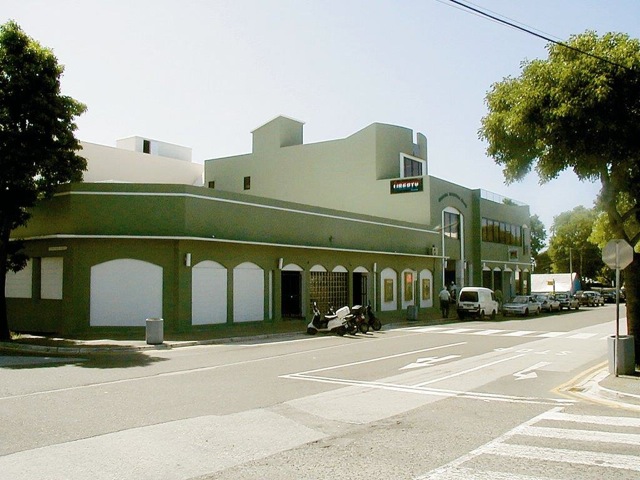
I arrived at the BIU at the appointed time and the first thing I noticed were two photographs taken outside Belco on 2nd February being displayed in a prominent position at the main entrance. I had provided both these photos to BIU Recording Secretary, Ronaldine “Ronnie” Burgess a few days earlier and she had gone to the trouble of having them enlarged and put in a prominent location for all to see. To me this was significant because one was a graphic photograph of P.C. Ian Davies lying on the ground with blood pouring out from the wound to his head while several fellow officers were trying to shield him, armed with nothing more than the regulation truncheons that police officers always carry when on duty in uniform. The second photos showed a group of police officers in uniform standing on the opposite side of Serpentine Road to the strikers. They are clearly unarmed and not carrying any riot gear.
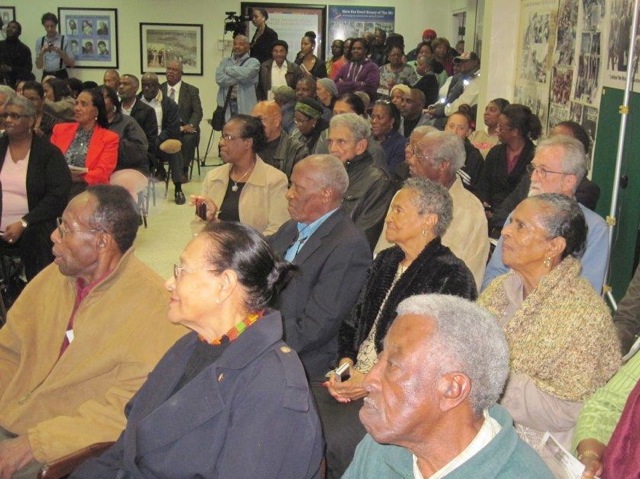
On entering the already packed hall I was pleased to see among the audience there were several police officers who had also been present at the Belco riot, including Eugene “Buck” Woods, Peter Duffy, and Gilmore Simons who had been awarded the Colonial Police Medal for Meritorious Service for his actions during the riots. The hall quickly filled to overflowing as did a second large room upstairs where the audience could see and hear what was happening via video.

It was a full house, with Premier Michael Dunkley, the Minister of Community, Culture and Sports The Hon Patricia Gordon-Pamplin (daughter of one of the founders of the BIU, Dr. E. F. Gordon), Senator Jeff Baron (also a former police officer), the Rt. Rev Nicholas Dill, Bishop of Bermuda, and a host of dignitories.
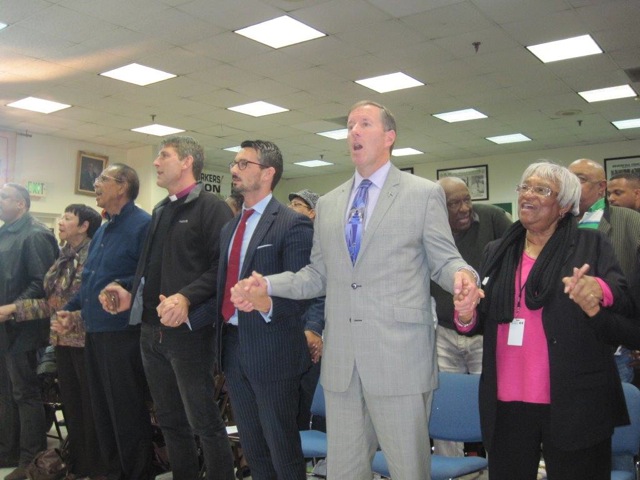
If I had any apprehension about being a former policeman speaking in front of what one might have been expected to be a hostile audience, this was immediately and completely dispelled. Wentworth, Andy and I were all warmly greeted and made to feel very much at ease throughout the evening.
After an opening prayer and remarks by BIU President Chris Furbert and former BIU General Secretary Eugene Woods (not “Buck” Woods!), Brother Ottie, or rather “Father” Ottie as he was called during the evening, gave his presentation on the history of events leading up to the BELCO/BIU dispute and the rioting.
He described how the BIU had been seeking to represent the outside plant workers at BELCO, those who basically,”did all of the donkey, dangerous and life risking work and had no union representation”. Even after the Labour Relations Officer recommended that a “secret ballot” be held among outside plant employees only, to determine whether the workers wanted union recognition, management refused to agree which resulted in the Electrical Division of BELCO voting by a secret ballot to take strike action, with the strike beginning on 19th January.
Brother Simmons comments really helped to put into perspective the times in which black people were living in Bermuda at that time, and the fight, often seemingly futile, to bring about equality and respect for the union and its workers. He said the strike was taken because the employees at BELCO were being denied their legal right to join a trade union of their choice and to have that union represent them in establishing fair wages and conditions of employment.
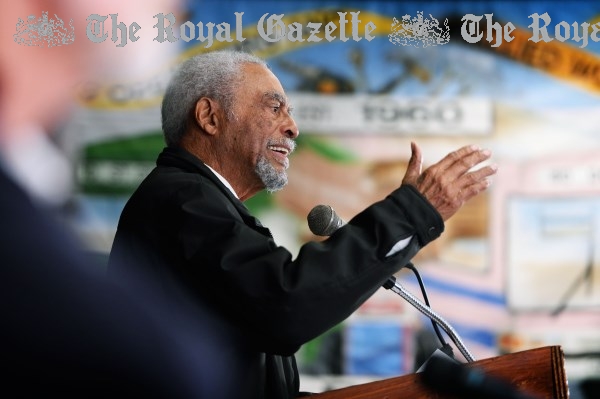
He gave a comprehensive account of the morning of the riot, and was at pains to say that the intent from the BIU leadership’s point of view had been to have peaceful picketing, He also commented that from the start of picketing several weeks earlier, the atmosphere between the police and picketers had been friendly, with police officers sometimes eating food supplied by the BIU supporters who were also taking care of the picketers. But on February 2nd "one could feel that congeniality coming to an end. To put it bluntly all concerned were frustrated."
He went on to say that on that day the Union made up its mind to frustrate the staff so that they would go back home, and the company would break down and agree to hold a secret ballot among the outside plant workers. He described how the lines moved slower than all previous days. As he said, "This frustrated inside plant staff and the police, and picketers were losing patience, hence the line slowed up to a near stop." He went on to say that the police then intervened and asked the picket line to speed up or open up, so that the white collar staff could go to work. He added that this plea by the police was simultaneously accompanied by pushing picketers in order to break the line, and that some "mild scuffles" started between police and picketers.
Brother Simmons described how he then received a phone call and was told that the police were planning to send the riot squad. He did say that when the police attempted to make openings in the picket line they were met with resistance by the picketers, and around this time the police riot squad appeared on the scene and started shooting gas canisters.
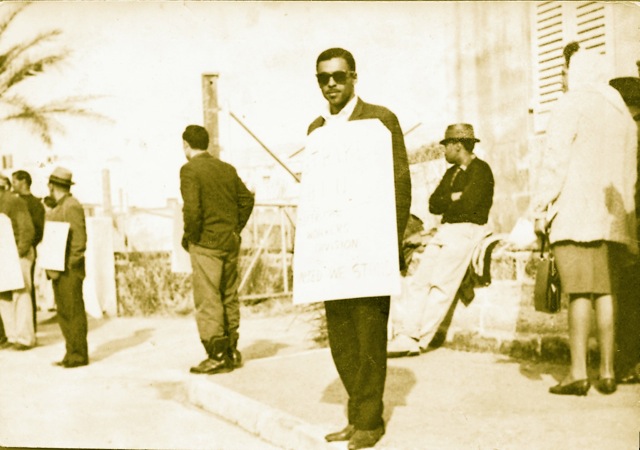
I have to say that his version of events leading up to the actual rioting, was at variance with what happened on the ground from the police point of view. He intimated that it was the Police who appeared to have a different attitude to the picketers that morning - a point on which we disagree. Nevertheless, Mr Simmons repeatedly stated that he wanted everyone to hear from us because the purpose of the panel discussion was to hear all points of view and to truly reflect on what happened that day.
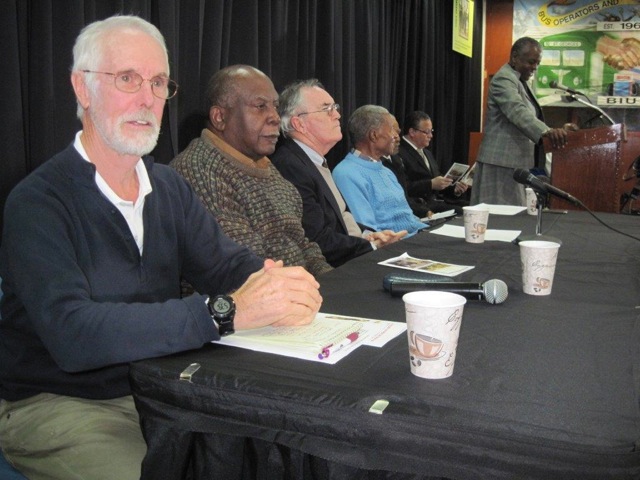
Mr. Stovell was first of the panelists to speak and he eloquently described the contempt with which the Belco outside crew were treated by management when they tried to unionize, and described how even the toilets at Belco were segregated. Mr. Stovell had been working in the garage at Belco and was helping the outside plant staff to seek union recognition as their bargaining agent. He had been incensed when the powers-that-be had denied Dr. Barbara Ball hospital privileges to see her patients as a result of her joining the BIU.
Next to speak was Andy Bermingham, and I should say here, that Andy and I did not get together or communicate in any way prior to that evening about what either of us might say.

Andy gave what I can only describe as a brilliant and concise presentation in just a few short minutes. He described how he was there at the centre of the action when things started to get out of hand; when a car tried to drive through the picket line and how the picket line quickly closed as the car tried to get through. Andy recounted how he and other officers took action to have the car driver reverse and leave the scene in order to AVOID any confrontation; how a group of men, not the picketers themselves were arming themselves with weapons, golf clubs, long sticks etc and storing them behind a nearby wall; how the picketers became more agitated, and how violence erupted and several policeman, including Ian Davies, all unarmed, were set upon, with Ian Davies in particular being very badly injured and his skull fractured after being struck on the head with a weapon.

Andy also stated categorically that the police had no intention of using the riot squad - except as a last resort, that tear gas was only used around 10.30, well after the violence that resulted in the injuries to Ian Davies and several other policemen; and that the police never had control of the BELCO area until gas was used to disperse the large crowd. Andy concluded with an assessment that there was poor command from Police HQ, and that the Police totally underestimated the depth of feeling and anger at grass roots level.
Wentworth then spoke about the tremendous difficulties he had as a Bermudian police officer, with close friends amongst the picketers such as Kenny Paul - they both sang in the same church choir. Wentworth stressed the shocking inequalities growing up in a society where whites held all the positions of power, and where one could only vote if one owned property, and even then, property owners, the vast majority of whom were whites, would have the right to vote in every parish where they held property, so much so that General Elections had to be held over three days so wealthy property owners could make it to all the parishes where they were legally entitled to vote.
This, and other personal experiences from audience members, such as the calling of mortgages when anyone was seen to be pro-union, and how Dr. Ball was denied access to her patients at the hospital as soon as she joined the BIU, were all factors in creating great resentment in the black community as it strived for equality and social justice.
Earlier in the evening there had been specific mention of the Police Force comprising of mainly expats, some of whom had served in colonial forces such as Rhodesia, (ironically, Andy Bermingham is the last Bermuda police officer to have served there), South Africa, Palestine etc. and when I spoke I felt I should point out that far from being a “colonial police officer” I was the son of a coal miner who was a lifelong member of the Mineworkers Union so I had an appreciation of the struggles of unions to improve the lot of their members. And far from being a “colonial police officer" I’d spent several years as a constable in the English Midlands (in a multi-cultural town, Bilston, near Birmingham) before coming out to Bermuda.
There was also a perception that UK officers lived in the barracks and only fraternized at the Police Club instead of mixing with the local community.
I pointed out that when I came to Bermuda in 1964, the police had the only completely integrated sports teams on the Island, such as our football and cricket teams both of which were amongst the best on the Island, whereas I could not recall any other teams with a white player in a black team, or a black player in a white team. I also mentioned spending far more time at the 40 Thieves Club and Hamilton nightclubs than sitting in the police club bar which was not really my scene.
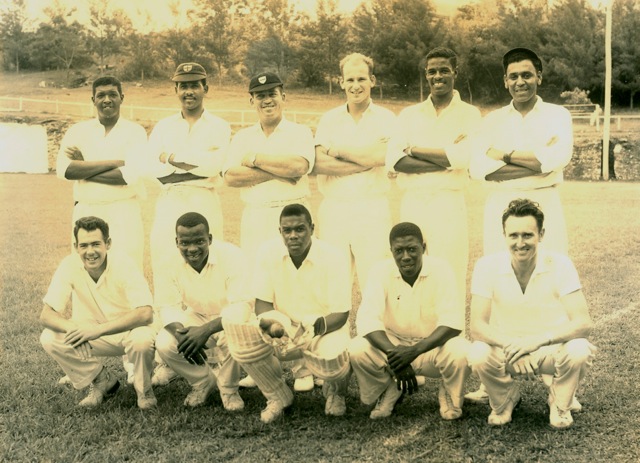
There was no arguing though that Bermuda was still very much a racist society in the 1960’s although it was difficult for a newly arrived policeman such as myself, and others, to appreciate the depth of this racism.
However, I recalled one first-hand experience I had when a group of young policemen and nurses got together for a swimming match in the St. George’s hotel swimming pool. Our Police team comprised all expats except one - Gary Perinchief.
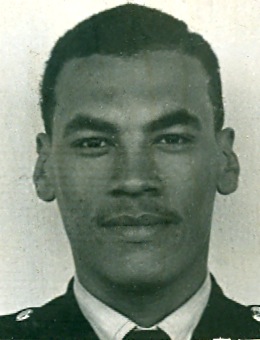
Shortly after our arrival at the pool, Gary was approached by the (black) Hotel Manager and told he was not permitted to swim in the pool. It took quite a few minutes for all of us to realize what had happened, and I regret to say that we carried on swimming, with an assurance from the guy organizing the meet that we would definitely be making an official complaint about the hotel.
Frankly, this incident has always haunted me. This was a dreadful, totally humilitating thing to happen to a young born Bermudian police officer in his own country who was deemed to be the wrong colour to swim with a “bunch of foreigners”! Yes, we did make a formal complaint, and I believe the hotel issued not only a formal apology, but also changed its policy as a result of our complaint. But I have to be honest and say that we all should have walked out there and then with our brother police officer. Not to do so was shameful. (If you check out the photograph below of the group of police officers lined up on Serpentine Road you will see Gary’s brother, Wayne, standing shoulder to shoulder with his fellow officers. That’s the way it should have been, in reverse, at the St. George’s Hotel swimming pool.)
I briefly outlined this incident as one of the first direct indicators I had that racism was very much alive and well in Bermuda in 1964, but as police officers we were not facing it 24 hours a day.
As mentioned earlier, Brother Ottie Simmons had stated that relations between the police and picketers had generally been very friendly when the dispute started, but the mood had changed by February 2nd.
I pointed out that from my personal experience, picketing had certainly been orderly and friendly at the start, and that we saw our duty as simply making sure that picketing was peaceful and done in accordance with the law i.e. was it a maximum of 16 in the picket line any one time? And they were supposed to stay on the move, and clear the gate each time before they turned around. Yes the tension had increased, in part because there had been several dynamite explosions of BELCO property prior to that morning - something which had not been alluded to during Brother Ottie’s presentation.
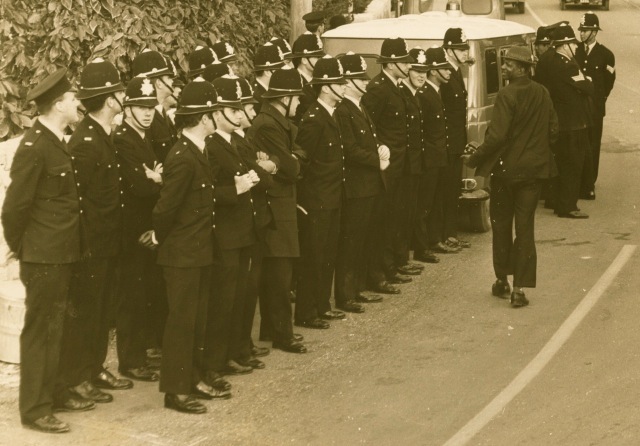
I had reported for duty outside BELCO at 7.20am that morning and had witnessed the fact that the picketers were moving much slower, to the degree that they were making it just about impossible for anyone to enter or leave through the gates which was clearly against the law. I was there along with about 18 others policeman, all in regular uniform.
During my brief comments I stated emphatically that I knew of no instructions to the police on duty to be more strict or forceful with the picketers, and as far as we were concerned our only purpose was to keep the peace and make sure the picketing was carried out legally. I pointed out I had made an entry in my pocket book that morning to the effect that I had seen men carrying golf clubs and other weapons across the street behind a nearby wall. They were not being carried by the picketers at that time but there was no doubt that some men were arming themselves with weapons. Fortunately for me, before the violence broke out I had to leave the scene to attend Court to give evidence in a case that had nothing to do with the dispute.
Although I had not been present when the violence occurred I concluded my remarks by pointing out that another young constable who was present that morning and who was injured in the riot, had later written his own first-hand account which had been published in the Royal Gazette 2 years ago. The officer was David Mulhall who left Bermuda later in 1965 and went on to become a university history professor. I stated that his account of the Belco riot was the most comprehensive and accurate I had ever seen from the point of view of those police officers who were there. (CLICK HERE to read Mr. Mulhall’s account). I invited anyone who is interested in seeing the Belco disturbance through the lens of the Police in more detail to read Mr. Mulhall's account on our ExPo website.
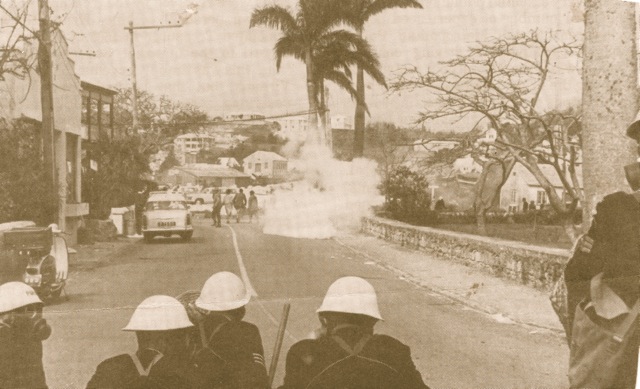
Former Sergeant Eugene “Buck” Woods stood up during question time and described in detail how he, too, was on duty that morning, as he had been during the Docks Dispute in 1959, and that the police were trying to keep the peace, but when violence broke out he was hit on the head from behind by a mayonnaise bottle full of water and had to be treated in hospital along with the other injured police officers - in the maternity ward!
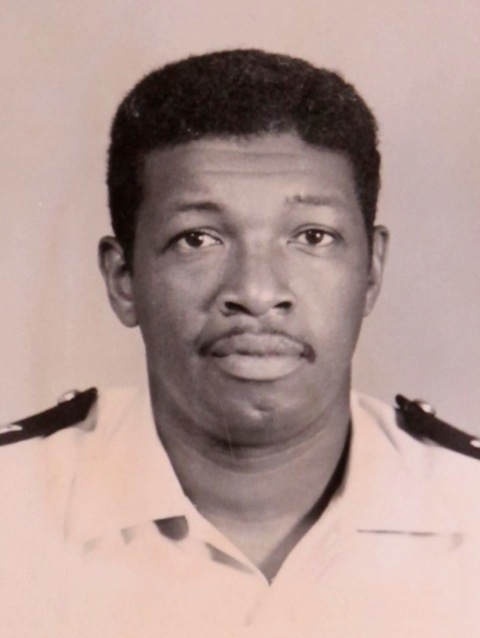 Eugene "Buck" Woods
Eugene "Buck" Woods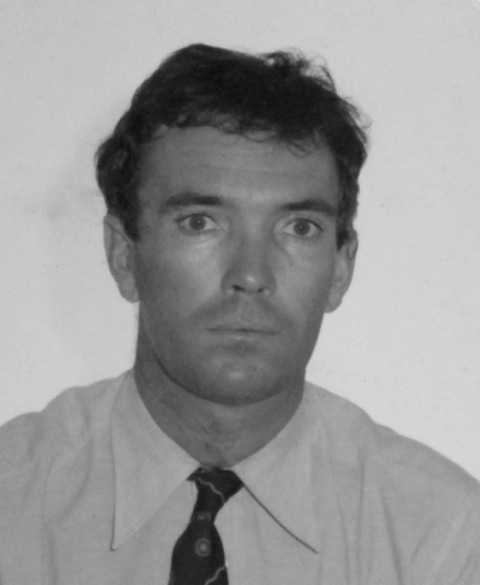 Andrew Bermingham
Andrew Bermingham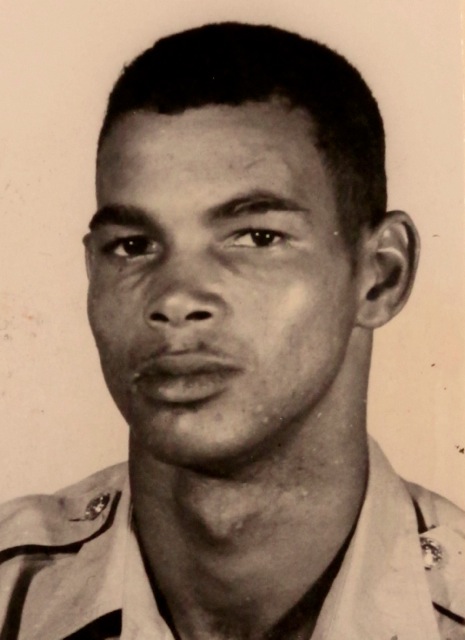
Yes, there were several speakers who described the actions of some individual police officers who behaved badly after the riot when emotions were running high but there was literally no animosity shown towards Andy or myself or the officers present who had been on Serpentine Road on the morning of February 2nd 1965.
Unfortunately, there are still some people who believe, wrongly, that P.C. Ian Davies and his 16 fellow officers were all injured as a result of the riot squad clashing with, or attacking the picketers, but this is manifestly untrue. P.C. Davies was attacked well before the riot squad was called in, and the photo of him lying in a pool of blood surrounded by policemen armed with nothing more than their regular small batons, which they had drawn to defend themselves and P.C. Davies by that time, clearly shows that neither he nor they were part of a riot squad.
What was very evident, however, was the fact that in many ways the racism and discrimination endured by black Bermudians for countless years before the Belco dispute came to a head on the morning of February 2nd when, as Brother Ottie himself said, "I think it safe to say that on that day the Union made up its mind to frustrate staff .... the lines moved slower than in previous days ... and the picketers were losing patience, hence the line slowed up to a near stop". The police were there to do nothing more than their duty and that was simply to ensure that the picketing was carried out legally, and that anyone wishing to enter or leave BELCO should have been able to do so, even if the line was moving slower than usual. This was a recipe for disaster, with a group of men arming themselves with weapons used to attack police long before the riot squad arrived at the scene.
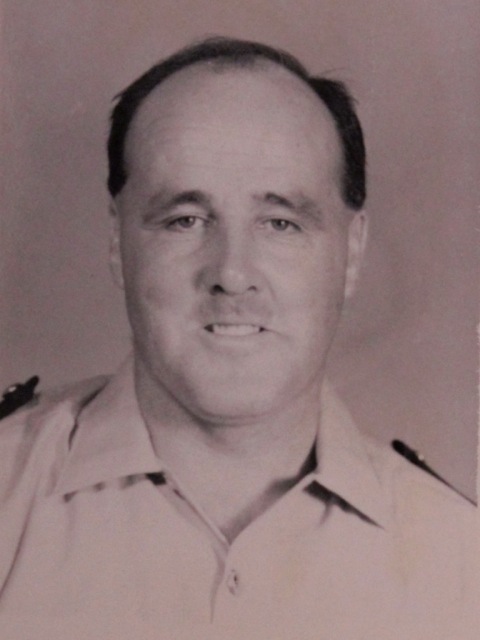 P.C. Ian Davies
P.C. Ian Davies
I would like to believe that although this time of reflection is just one event, it may help all parties in some small way to realize that in any dispute there is a need to respect and listen to the other side, and to make every effort to move forward without the need to resort to violence. There is a need for the public at large, especially the parties to any dispute, to appreciate that the Police Service is there simply to keep the peace and not to take sides. It is also imperative that the Police be properly prepared and thoroughly trained to handle difficult situations with tact, diplomacy, understanding and professionalism.
Thanks to the foresight of now retired president Ottiwell Simmons and organizers of this special event designed to reflect on the events of 50 years ago, I felt that the evening resulted in a greater appreciation of the role of the police and a realization that those officers present outside Belco on the morning of the riot were there for one purpose only - to carry out their duties and NOT to take sides. The evening’s discussions and debate were recorded on video, and it should be viewed by more people who will hopefully conclude at the end of the day that the Police were not the instigators of the Belco riot. The Royal Gazette also published an article about this evening's event on 3/2/15 (CLICK HERE for the Royal Gazette article).
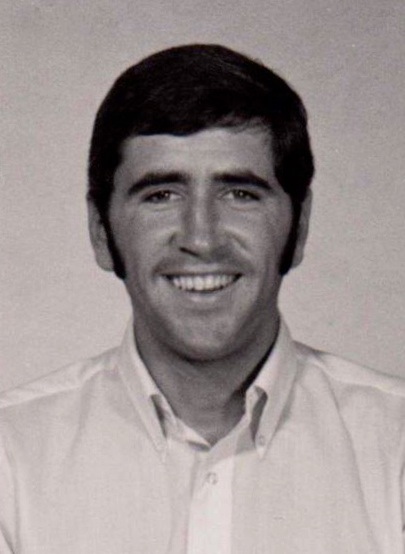
My involvement on the 2nd February 1965 was quite brief but quite eventful. I had only been on the Island for two months and had no understanding of the discrimination that existed at that time or the underlying resentment that it quite rightly caused.
Prior to 2nd February I had not been involved in policing the strike and quite frankly hadn't shown a lot of interest in what had been going on at BELCO since mid-January.
However, as the situation at BELCO became more tense I found myself, with others, on stand-by at Hamilton Police Station. As I recall it, information was received that morning that things were turning unpleasant and that Andy Bermingham and Inspector Ball had been assaulted.
Following receipt of this news I volunteered to join a group in a van which I am sure was driven by Derek Jenkinson, to attend at BELCO. We were all in regular police uniform. On arrival at BELCO our van was very quickly surrounded and attacked by a very angry crowd and eventually turned over. It was as we clambered out of the van that we were attacked by men wielding all manner of weapons.
While we were regrouping I saw, lying on the ground in an area behind a wall - and lower than the roadway - a stash of makeshift weapons consisting of iron bars, wooden poles, golf clubs etc. I would estimate there were about 15 of these weapons there. They were on the ground just about in line with the large palm tree, the bottom of which can be seen in the photograph showing Ian Davies lying on the ground with his head badly injured. The trunk of the tree can be seen between Andy Bermingham and George Linnen who were trying to protect Ian Davies, with Tim Burch standing next to them.
Ian had been badly injured and the police officers present were all trying their best to protect him.
I went down from the roadway to where the weapons were and was in the process of gathering them up when a man jumped up on the wall from the roadside just by the tree, wielding a long metal bar. I stood up to face him at which point he threw the bar at me, the end of which hit me on my top lip causing a wound that later needed several stitches.
The man ran off and I discovered that what he had thrown at me was a hollow metal bar around an inch to an inch and a quarter in diameter with a wooden plug driven into one end into which several nails had been driven before being turned over and their heads roughly cut off causing them to be jagged at the ends. It was obvious that much time and thought had gone into the preparation of this weapon which was clearly designed to cause injury. This and the stash of weapons I discovered also clearly showed that many of those present that morning were not there for any peaceful purpose.
After being hit I went back up on the roadway where Ian Davies was lying on the ground with serious head injuries, and with others we tried to protect him while we waited for the ambulance to arrive.
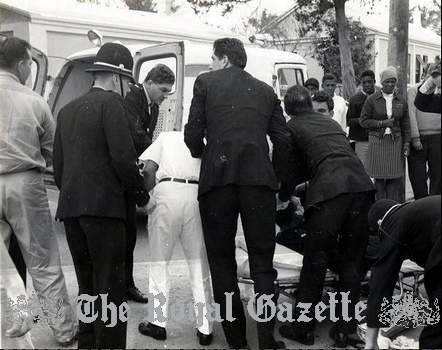
I was eventually taken in a large American station wagon ambulance and well remember racing along Front Street with sirens sounding.
I later gave evidence in court about the events of the 2nd February and I recall that these cases caused further tension in the community. Like everyone I was concerned about the condition of Ian but apart from this I put the events of the 2nd February behind me.
23rd Feburuary 2015
Editors note - P.C. Michael Caulkett was awarded the Colonial Police Medal for Gallantry as a result of his actions that morning, as were P.C's Andrew Bermingham and Ian Davies.
23rd February 2015
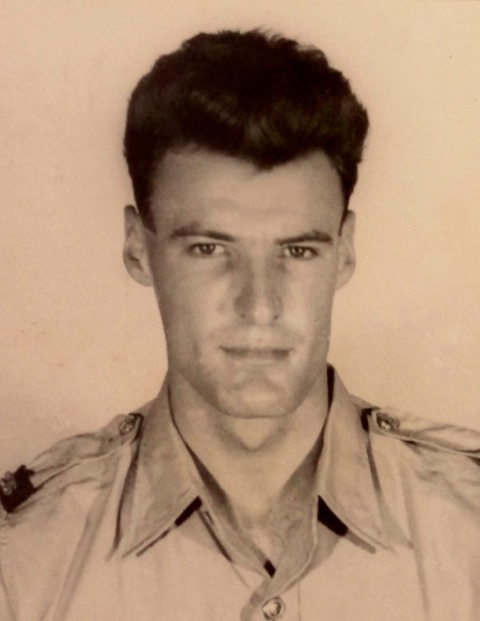
I called Police Headquarters and asked for them to send the riot squad as things were getting out of control, but I was told they wouldn’t be sending the riot squad.
I remained at the Works Entrance for a while to make sure no-one climbed over the fence. I saw a lot of picketers and people running around, some of them now armed with weapons, golf clubs, concrete reinforcement rods etc and heading towards the Office Entrance.
I saw a police van passing my location heading towards the Office Entrance and I later learned they had been dropped off to try to remove weapons from the crowd who used their weapons to cause injury to these officers. The officers who arrived in the van were definitely in regular uniform. They were not in any riot squad.
I remained at the Works Entrance and called a second time for the riot squad, again the answer was negative.
Things began to get worse and after a long delay the riot squad led by Ernie Moniz finally arrived. The picketers scattered with some running past my location at the Works Entrance. After things settled with no picketers at my location, I walked through the Belco Property to the Office Entrance.
When I looked out from the Office Entrance, I recall seeing debris everywhere, mainly bricks and stones. A number of uniform officers, not in riot gear, were standing around on the road. I found a thick piece of cable about 4 ft. long and approximately 1-1/2 inch in diameter. The thick wires at the end were exposed, bent over like an umbrella and the wire ends were sharpened. I picked it up in case I had to defend myself, as the issue truncheon was no match against the picketers’ weapons. (I base this comment as an instructor for 23 years at the Ontario Police College in charge on use of force, including firearms and self-defense.)
I was asked to go upstairs to meet some men from the Belco Management. They handed me the key to the building and told me they were closing it down. I told them that a number of policemen had been injured to keep the place open, and after they discussed it among themselves, they agreed to keep Belco open and I handed the key back to them.
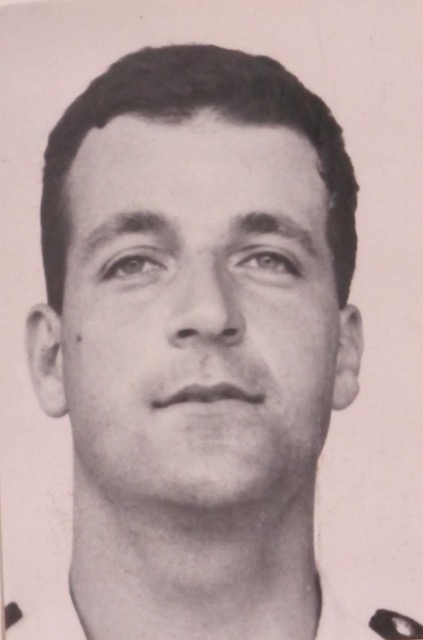
Chief Inspector Nixon ordered me to draw the unit van and collect Sgt. Ernie Moniz and the riot squad at Operations and take them to the Belco Riot on the morning of 2nd February 1965. Afterwards I remained at the scene with others and searched the peaceful pickets. There was a large lunchbox behind the line wall where golf clubs etc had appeared. Their large lunchbox was searched and contained carefully wrapped sandwiches in tissue, along with machete’s and rocks etc. This completely negated and nullified allegations of Police attacking them because Ian Davies and my other colleagues carried nothing offensive whatsoever!!
Editors note - The hiding of offensive weapons in the large lunchbox used to feed the picketers apears to show a clear intent by some of the organizers to prepare in advance for a violent confrontation with the Police. Some of the weapons used and subsequently seized that morning were specifically designed as offensive weapons.
Nurse Jo Fairey was also called to the riot that morning in an ambulance dispatched to the scene to pick up a very seriously injured policeman, Ian Davies. Jo vividly recalls how the rioters tried to stop the ambulance getting to Ian Davies and also having some of the rioters rocking the ambulance trying to overturn it while its crew was trying to treat the injured officer and transport him to Emergency.
Account of riot given by P.C. Gilmore Simons
 P.C. Gilmore Simons
P.C. Gilmore Simons